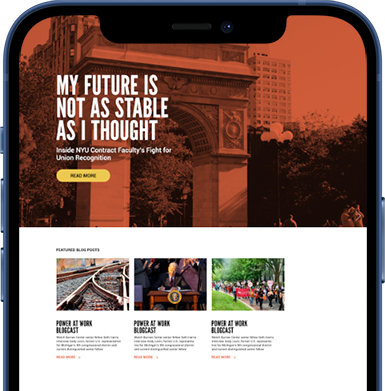Bosses from CEOs to front-line managers don’t seem to like being alone in empty offices and darkened hallways. Most of them understood they could not force their employees back to work in confined spaces while the COVID-19 pandemic was raging. Yet, now that the pandemic emergency (but not all risk of COVID infection) has ended, bosses in many industries are getting cranky about their employees working from locations outside their offices. So, they are seeking in growing numbers and in various ways to enforce return-to-work-site plans (see story here and various data sources here, here and here).
Before proceeding, let’s acknowledge that many workers did not have the opportunity to work remotely even during the height of the pandemic. We have all heard the stories about nurses and other health care providers, transit workers, truck drivers, packinghouse workers, grocery store and food delivery workers, manufacturing workers, and many others. These employees did their jobs in life-threatening circumstances to keep our society functioning. Too many did not survive. Estimates of the percentage of workers working remotely one or more days per week, or “teleworking” in Bureau of Labor Statistics parlance, tell us there were as many or more workers who did not work remotely throughout the COVID-19 pandemic. Even during the pandemic’s worst days, only one-third to one-half of workers were teleworking. Those percentages declined dramatically as early as the first few months of 2022 when employers’ demand that workers return to work-sites began. So, the balance between remote work and on-site work tipped heavily toward workers being required to show up, even given the grave risks involved.
Yet, a divide also exists even today for those who were able to work remotely. Except for a few workers with a lot of individual power in their dealing with their employers, non-union employees have not had an effective voice in their employers’ return-to-work decision-making. The basics are familiar to most American workers: the boss decrees a return and the terms of that return; employees either comply, quit, or risk discharge, discipline, transfer, or demotion. Perhaps some workers find some other way to voice concerns or objections to their supervisors or sympathetic human resources staff, but most employees will not risk the retaliation or other negative reaction that could come from their employers if they speak up. Workers know that “employment at-will” is really employment-at-the-employer’s-whim.
Employees represented by a union, on the other hand, have a voice in their employers’ return-to-work plans. The National Labor Relations Act requires private-sector employers and unions to bargain over working conditions, which includes remote work arrangements and return-to-work decisions. Many states’ public employee collective bargaining laws have similar requirements. According to a Bloomberg Law analysis, only a very small percentage of collective bargaining agreements addressed remote work in the five years leading up to the pandemic, but that small number almost certainly grew substantially during the pandemic. Beyond negotiations over the specific issues raised by the post-pandemic period, workers represented by unions also benefit from common collectively bargained protections that can play a critical role in an employer’s return-to-work decisions.
Workers know that “employment at-will” is really employment-at-the-employer’s-whim.
For example, labor-management agreement often establish safety and health committees with worker participation. These committees not only help ensure compliance with state and federal laws, but also involve workers in monitoring and abating workplace hazards, including as part of the return-to-work process. Safety and health committees and unions also advocate for necessary personal protective equipment, including the various forms of PPE that were essential during the pandemic, for example, in health care settings and others characterized by extensive interaction with the public. Unions can bargain to keep the flexible work options they negotiated during the pandemic now that the pandemic emergency has ended. Flexible work can provide an important supplement to paid leave plans that are more common in unionized workplaces than in non-union workplaces.
Other provisions commonly found in collective agreements are also relevant. Labor-management agreements typically include protections against workplace discrimination. So, for example, unionized workers with disabilities (including immunocompromised workers) can involve their unions in the so-called “interactive process” in which employers and workers with disabilities are supposed to engage to sort out workplace accommodations. A union's involvement may avoid the need for a complaint to the Equal Employment Opportunity Commission and a lawsuit under the Americans with Disabilities Act by solving the problem in the workplace, where it should be solved. Contractual anti-discrimination provisions also allow the union to guard against the employer discriminating in the implementation of return-to-work plans. Even absent discrimination on the basis of race, sex, disability, or other classification, workers with union representation who have particularized concerns about returning to the workplace can raise those concerns with management with the assurance that their union and their contract’s grievance procedure and “just cause” provisions will provide some measure of protection. This may be the most direct form of voice in the workplace available to workers in unionized workplaces that non-union workers do not have.
The current controversy over when, how, and how frequently workers must return to work is an uncommon moment in labor relations. That’s because the circumstances that allowed some workers to leave their workplaces and work remotely was a rarity. Fortunately (or should I say hopefully?), pandemics of the size and ferocity of COVID-19 don’t come around often. Nonetheless, the current fight over workers returning to their work sites offers yet more evidence that workers need a voice in workplace decisions, and the power to make that voice heard, even when there is no pandemic threatening them. The need is real every day for many decisions, both big and small.

